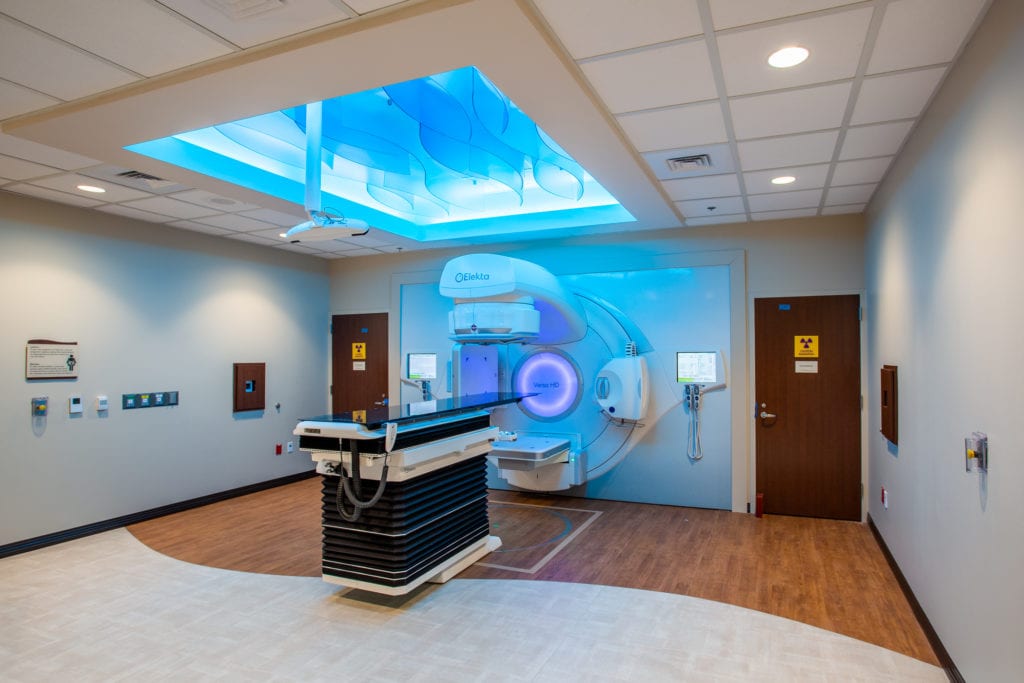

the heart, spine, or bladder.
Each dosage of radiation is determined by a dosimetrist, who will use scans of the patient to tailor their dosage to their exact needs. The machine then creates a beam that is focalized on the tumor, working to make small breaks in the DNA inside cells. The breaks that the radiation therapy creates keeps cancer cells from growing and dividing and causes them to die.
A typical treatment takes only two to five minutes and patients can count on receiving this therapy during a three-to-six-week period, depending on the patient’s needs.
External Beam Radiation Therapy
External Beam therapy is referred to as local treatment, which simply means it targets a very specific part of your body, such as a lung or prostate. It is delivered by a machine that aims radiation particles at your cancer, with the goal of delivering the highest prescribed dose of radiation to the tumor while sparing any normal tissue around it. These radiation particles can be photons, protons or electrons.
Stereotactic Body Radiotherapy (SBRT) is a type of external beam radiation therapy that uses special equipment to position a patient and precisely deliver radiation to tumors in the body (except the brain). The total dose of radiation is divided into smaller doses given over several days. This type of radiation therapy helps spare normal tissue. SBRT is used to treat tumors in the lungs, spine, liver, neck, lymph node or other soft tissues.
Internal Radiation Therapy
Internal radiation therapy is a type of treatment where a source of radiation is placed inside your body and will give off radiation for a prescribed amount of time.
The source of that radiation can be either solid (called brachytherapy) or liquid (systemic therapy). Solid sources are surgically placed near the tumor. Liquid sources are swallowed or injected and travel through the blood stream.


